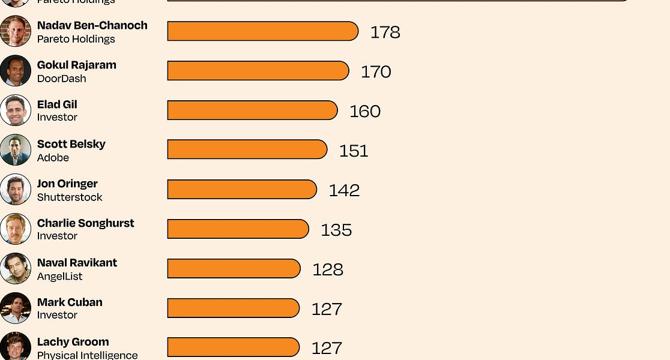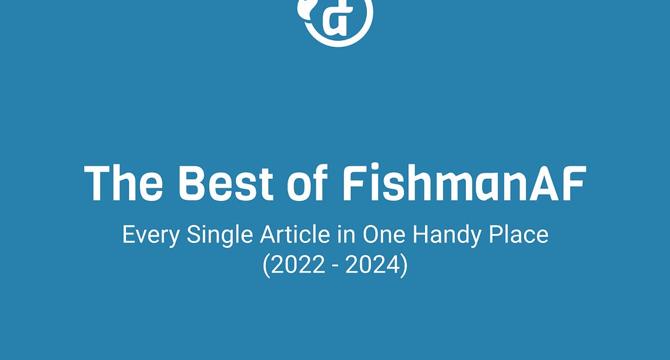Productivity News
Minis
11.6k

Image Credit: Minis
What to do when you don’t know the answer in an interview
- Stay Calm: It’s natural to face tough questions. Take a moment to collect your thoughts before responding.
- Be Honest: Acknowledge you don’t know the answer but express your enthusiasm to learn. Being transparent shows integrity.
- Ask Clarifying Questions: If the question is unclear, ask for more details. This demonstrates critical thinking and a willingness to engage.
- Think Aloud: Walk the interviewer through your thought process, even if you don’t have the solution. This shows problem-solving skills.
- Offer an Alternative: Provide a related example or solution, demonstrating your ability to adapt and think critically. Interviewers appreciate transparency and resourcefulness.
Read Full Article
79 Likes
Minis
27.6k

Image Credit: Minis
5 things you could be doing wrong if you're struggling to get a job
- You're sending out way too many résumés: Apply to roles that align with your skills and interests instead of mass applications. Quality matters.
- You're waiting too long to apply: Apply within 24 hours of a job posting to ensure early consideration.
- You might need to reconsider the contents or format of your résumé: Keep your résumé clean, authentic, and aligned with your LinkedIn profile. Avoid over-reliance on AI tools.
- You're not considering your connections: Leverage your network to connect with company employees or hiring managers.
- You're not sufficiently prepping for an interview: Research, practice, dress appropriately, and follow up with a thank-you note.
Read Full Article
145 Likes
ADPList’s Newsletter
167

Image Credit: ADPList’s Newsletter
The Best Design Advice
- People don’t exist to use your products; you build products to be useful to people, prioritize human needs over engagement metrics.
- Startups need to force a choice, not a comparison.
- Never let form overshadow function. Aesthetics should enhance usability, not detract from it.
- The measure of a great product team isn't how many features they ship—it's the outcomes they create for users and the business.
- Leverage AI to anticipate user needs and automate tasks, you can create frictionless journeys that feel intuitive and satisfying.
- AI-driven design choices can change the world by predicting user behavior and enhancing personalization in UX.
- Build products that stand apart by reshaping the conversation. innovate in ways that make direct comparisons irrelevant.
- When faced with design decisions, ask: does this make the product easier to use? Does it address a user pain point?
- Normalize failure. Learn from them, focus on testing, and iterate.
- Interview intensely for cultural fit, ask questions that help you identify resilience or unhealthy coping mechanisms.
Read Full Article
9 Likes
Lenny's Newsletter
154

Image Credit: Lenny's Newsletter
Top angel investors in the U.S.
- Crunchbase has partnered with Lenny Rachitsky to find out who some of the most successful angel investors in Silicon Valley are.
- The list includes investors who have been most active over the past five years, who are most active currently, and who have been most successful historically.
- Some of the most successful angel investors on the list are Edward Lando and Nadav Ben-Chanoch, Gokul Rajaram, Elad Gil, and Scott Belsky.
- The investor's profile includes their investment focus, investment history, success rate, and contact details.
- The most active angel investors of the past five years include more than 1,000 invested startups, including over 25 unicorns.
- Other investors with the most exits in the past six years include Justin Kan, Fabrice Grinda, and SV Angel.
- The list is compiled using data from public fundraising announcements and investors who voluntarily shared cap tables with the firm.
- The more active angel investors are investors in a wide range of industries, including fintech, infrastructure, AI, B2B, B2C, and consumer products.
- Warm introductions by trusted sources are always recommended when contacting these angel investors, but cold emails with a good pitch can also work.
- The numbers included in the list are directional and not exact, but overall, the list provides a useful resource for those looking for funding for their startup.
Read Full Article
8 Likes
Minis
9k

Image Credit: Minis
Why this ex-Google exec always asks about candidates' 'life before their resume
- Jennifer Dulski, CEO of Rising Team and former Google and Facebook leader, prioritizes learning about candidates' lives before their resumes during interviews.
- She seeks qualities like adaptability, creativity, and ambition, which she believes are evident in early life experiences. Asking candidates to "tell me about your life before your resume" often reveals stories of entrepreneurial spirit, problem-solving, or innate curiosity—traits that translate into workplace success.
- Dulski emphasizes understanding the person behind the professional achievements, as natural drive and resilience in life often mirror workplace behavior. This unique approach helps her identify candidates who can thrive on her team.
Read Full Article
33 Likes
Minis
24k

Image Credit: Minis
Indian IT CEO pay soars 160% in last 5 years, while fresher salary rises only 4%
- Salaries of CEOs at India’s top five IT firms—TCS, Infosys, HCLTech, Wipro, and Tech Mahindra—have surged by 160% in five years, reaching a median annual pay of ₹84 crore in FY24.
- Meanwhile, fresher salaries have risen just 4%, from ₹3.6 lakh to ₹4 lakh. This disparity comes as corporate profits fail to keep pace with wage growth, despite IT being India’s largest private-sector job creator.
- Former Infosys CFO Mohandas Pai criticized this imbalance, questioning high CEO rewards amid falling margins and stagnant entry-level pay, calling it "very wrong" and exploitative.
Read Full Article
42 Likes
Minis
2k

Image Credit: Minis
What is a ‘stay interview’? Why you should ask for one if you plan to keep your job
- A stay interview is a proactive discussion where employees and managers align on career goals, motivations, and improvements within the company.
- Unlike performance reviews, which assess past work, stay interviews focus on enhancing satisfaction and retention. Companies like Google and IBM conduct these biannually to understand employee needs and foster engagement.
- Employees can also request them to express concerns, discuss professional growth, and suggest workplace improvements. Success depends on open communication and actionable follow-ups. By addressing concerns early, stay interviews reduce turnover costs and help shape fulfilling career paths, benefiting both employees and employers.
Read Full Article
13 Likes
Minis
8k

Image Credit: Minis
Job-hopping vs. staying at one company: What’s the best route to the corner office?
- Skill Growth: Job-hopping boosts diverse skills quickly; staying builds deep expertise in a single area.
- Networking: Changing jobs expands your professional connections, but staying builds stronger internal relationships.
- Salary Trends: Job-hoppers often enjoy faster salary growth, whereas long-term employees may rely on gradual raises or promotions.
- Stability vs. Agility: Staying signals reliability, valued in traditional sectors, while job-hopping showcases adaptability, prized in dynamic industries.
- Career Goals: Align your strategy with your aspirations—fast-track growth through hopping or pursue leadership via long-term commitment.
Read Full Article
50 Likes
Minis
49.4k

Image Credit: Minis
4 traits you should have as an employee to help keep you off the layoff list
- Dependability: Reliable employees who meet deadlines and deliver consistently are invaluable to their teams.
- Strong Communication: Clear, proactive communication, including addressing issues and confirming understanding, sets top employees apart.
- Problem-Solving: Offering solutions instead of just identifying problems makes you indispensable.
- Teamwork: Being supportive, collaborative, and genuinely engaged with colleagues fosters a positive work environment.
- Despite these traits, layoffs can occur due to investor or board-level decisions. While not always preventable, these qualities can make you a stronger candidate to retain.
Read Full Article
157 Likes
Minis
14.2k

Image Credit: Minis
How to tell a hiring manager you’re interviewing for other jobs
- Be Transparent: Inform recruiters early about interviews with other companies to build trust and align expectations.
- Clarify Preferences: Sharing career goals, like managing large teams, helps recruiters discuss role differences.
- Prevent Mismatches: Open communication ensures candidates and employers find mutually suitable roles.
- Encourage Informed Decisions: Transparency fosters better understanding, helping candidates make thoughtful career choices.
- Build Strong Relationships: Honest discussions during hiring lead to long-term satisfaction and success for both parties.
Read Full Article
59 Likes
Minis
32.7k

Image Credit: Minis
How to know when it's the right time to leave your job?
- Declining Motivation: If meetings and coworker interactions no longer interest you, it may signal disengagement.
- No Growth Opportunities: Feeling stagnant or repeatedly overlooked for promotions indicates limited potential in your current role.
- Plateaued Feedback: Consistently "meeting expectations" in reviews suggests growth has stalled.
- Burnout Signs: Experiencing physical or emotional stress from work, especially in toxic environments, is a clear red flag.
- Prepare for Change: Reflect on goals, update skills, and build a job-search toolkit, including résumé updates and networking, to transition smoothly.
Read Full Article
193 Likes
Minis
2.2k

Image Credit: Minis
These 5 hidden clues reveal if you’re about to get hired
- Positive Body Language: Smiles, eye contact, and engaged gestures from the interviewer signal genuine interest.
- Questions About Availability: Inquiries about start dates or schedules suggest serious consideration for the role.
- Job-Specific Discussions: Conversations about responsibilities, team dynamics, or office culture indicate they’re envisioning you in the position.
- Extended Interviews or Introductions: Longer interviews or being introduced to team members show they’re evaluating your fit more closely.
- Talk of Next Steps: Discussions about references, timelines, salary, or benefits reflect advanced interest in hiring you.
Read Full Article
14 Likes
Minis
13.9k

Image Credit: Minis
How to tell if a job offer is real or a scam
- Check the Company’s Credibility: Research the company’s website, email domain, and online presence. Scammers often use fake domains.
- Avoid Paying Fees: Real employers never ask for money upfront, whether for application fees, equipment, or training.
- Watch for Red Flags: Look out for poorly written emails, unsolicited job offers, or requests for sensitive information like bank details.
- Be Cautious with Communication: Scammers often use text messages, unfamiliar platforms, or press you for quick decisions.
- Use Trusted Job Sites: Stick to reputable job boards and official company websites to find job listings.
Read Full Article
61 Likes
The Beautiful Mess
328

Image Credit: The Beautiful Mess
TBM 328: Beyond Firmographic-Based ICPs
- ICP can't be defined by simplistic descriptions like 'enterprise' when it comes to products that touch ways of working.
- To form an ICP for a ways-of-working product, it is critical to get into the dimensions that matter and will dictate your strategy and more.
- Become a sponge and listen before converging on a set of dimensions instead of limiting yourself to a fixed number of profiles.
- Key variables that matter for the ways-of-working product are Awareness, Context, Rate of change, and perception around effectiveness.
- Company that needs an opinionated product or more thought leadership will look for more complex requirements.
- Organizational psychographics are a powerful way to segment customers relevant for ways of working products that are highly sensitive to a company's culture.
- Clusters of de-centralized and rapid growth companies are trending towards using no-code tools for internal use.
- Larger companies are following a motion of de-scaling and adjustments, requiring a more centralized overview.
- Different customer segments demand very different things from product and success teams.
- ICP should be specific and actionable, or consider alternative approaches.
Read Full Article
19 Likes
The FishmanAF Newsletter
0

Image Credit: The FishmanAF Newsletter
The "Best Of" The FishmanAF Newsletter
- FishmanAF Newsletter provides solutions for Growth, Product, company building and parenting while working.
- The author led new product development at Mozilla, and released nearly 50 podcast episodes for Startup Dad.
- The newsletter grew to over 11k subscribers with 40-50% open rate.
- Several guest posts featured this year, including "Is it time to leave Your Job", "Finding Your Company's Next Growth Opportunity" and "A Structured Approach to International Expansion".
- The author launched a merch store for Startup Dad and grouped past newsletters by topic, insight, and job-related approach.
- Some highlighted topics are building Growth, choosing the right company or career, improving product building, and balancing career and family.
- Tips on hiring for Growth, the Growth Competency Model guide to building high performing teams and product management specializations are also part of the highlighted topics.
- Strategies that lead a company to 2023, and 2024 editions of growing revenue from Pumpkin Patch are included too.
- Various topics on experimentation, metrics ownership, and communication are also covered.
- Several podcast episodes on startup parenting are including building memories, integrating work and family, FOMO, and balancing pride while raising a family.
Read Full Article
Like
For uninterrupted reading, download the app